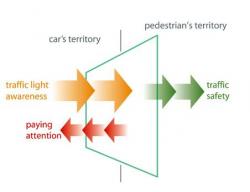Search the Community
Showing results for tags 'japan'.
-
CNA report : Singaporean with hidden drugs arrested in Japan TOKYO: Japanese police have arrested a Singapore man after finding about four kilogrammes (8.8 pounds) of illegal drugs hidden inside his wheelchair as he arrived at a Tokyo airport, reports said Monday. The unidentified 47-year-old man flew into Narita international airport near Tokyo on September 5 on a Cathay Pacific flight from Hong Kong via Taipei, the Kyodo and Jiji Press news agencies reported. Four bags containing unidentified stimulants worth 360 million yen (four million dollars) were found inside the seat cushion of his wheelchair, the reports said, adding that prosecutors had since indicted the man. A Japanese customs source was quoted by Kyodo as saying that the case was "quite unconscionable because the suspect probably tried to take advantage of inspectors' attitude toward the disabled". It was not immediately clear if the man was genuinely disabled or had used the wheelchair as a ruse. S$4 million worth of drugs he was carrying ................ The value is really
- 15 replies
-
- Singaporean
- Drug
-
(and 2 more)
Tagged with:
-
Came across a very interesting article in this blog which speculated that Honda Japan is about to launch a brand new civic model http://paultan.org/2010/08/24/honda-civic-...on-coming-soon/ In Honda Japan's website, it states that the current civic model has been discontinued from 2010.08 http://www.honda.co.jp/auto-archive/civic/4door/ anyone else has heard any news about this???
-
Happen to find this website introducing the 2009 Aiphard in Japan. Donno when wil it be imported to Singapore http://videoandpic.blogspot.com/2008/09/to...phard-2009.html
-
http://www.webridestv.com/photos/ferrari-f...-in-japan-15712
-

Classic Car show in Japan. Part 2: Rocky Auto 'SR311' Fairlady
Rigval posted a blog entry in MyAutoBlog
This is the second of the two cars displayed at the '2 days of Nostalgia' event in Japan. This time we bring you the SR311 Nissan (or was it Datsun in those days) Fairlady modified by Rocky Auto(don't ask, but they tune vintage Nissans). This is the 2nd generation Fairlady and it was first manufactured in 1965. The car first came with a 1595cc engine SP311 type called the "1600 Fair Lady" and this evolved into the 1967 version 1982cc four-cylinder series SOHC which appeared with a transmission 5-speed engine and it was called the SR311 Type 2000. Lets just call it 'the Lady' in this article for simplicity's sake. The original 2.0 gave 145ps and 180Nm of torque. A 910kg body means that 0-400m happens in15.4 seconds and a top speed 205km / h . The Lady was the first production Japanese car to exceed 200km/h. However, the Rocky Auto is a modified version of this Lady. A Nissan Silvia Automatic from the 1990s had donated its drivetrain for this Lady. The 140-150bhp SR20 (Hence SR311 instead of SN311) 2.0 liter 4 cylinder engine had replaced the original (non-turbo version) for modern reliability and maintenance as well as drivability, the automatic transmission replaced the original transmission and the car is also equipped with air conditioning. The car is also fitted with power assisted steering as according to Rocky Auto, the original steering rack is ridiculously heavy. Rocky Auto will charge-
- Motor Show
- Classic Car Show
- (and 5 more)
-

Classic Car show in Japan. Part 1: Garage Starfield Mazda Cosmo
Rigval posted a blog entry in MyAutoBlog
[extract]Recently in the far away land of Japan a 2 day motor event was held. The-
- Motor Show
- Classic Car Show
- (and 5 more)
-
http://www.lta.gov.sg/corp_info/doc/M03-Ca...20by%20make.pdf
-
haha... a really strange scenario... a beggar in the city of Ling Bo nicknamed 犀利哥 suddenly burst to stardom on the internet after a photo of him was posted on the net... there are even fan clubs formed for him in china, taiwan and japan... supposed to be charmed by his "cool" looks, sad eyes and messy hair... and his "cool" photos are also PSed...
-
Hi bros and sis, any recommendations for cheap surface shipping from Singapore to Japan.. I would be sending over personal items for a friend of mine who has went over to japan.. Are there other factors to consider such as weight restrictions, value and packaging? Pls provide any inputs and details regarding the shipping costs, duration, etc if you have any.. Thanks in advance..
-
Hey guys/gals tot u might be interested in reading this! http://www.edmunds.com/insideline/do/Drive...rticleId=122688 The teeny Honda that dared to be big is back with a redefined package for 2008. What's this? A brand-new Honda Fit? Didn't it just arrive in America last year? Well, yes, but Japan and Europe have known about the superb Honda Fit since 2001, when it first landed in their respective showrooms and quickly set sales records. It simply took a further five years to reach us here in the U.S. as Honda struggled with the "ifs" and "buts" of introducing such a small car in America. In the end, the combination of Scion's marketing success and skyrocketing gasoline prices finally forced American Honda to bring the Honda Fit to the U.S. Now it's time for a major model change, and the new Honda Fit will be introduced at the 2007 Tokyo Auto Show. About a year from now, it will reach America as the 2009 Honda Fit. Bigger in Almost Every Way Not surprisingly, the all-new 2009 Honda Fit follows the same recipe as its predecessor. Centered as before around its centrally located fuel tank
-
Take It From Japan: Bubbles Hurt Yoshihisa Nakashima in front of his condominium building in the suburb of Kashiwa, far from his government job in Tokyo. His apartment is worth half of what he paid 14 years ago, during the real estate bubble. By MARTIN FACKLER Published: December 25, 2005 KASHIWA, Japan FOURTEEN years ago, Yoshihisa Nakashima looked at this sleepy suburb an hour and 20 minutes from downtown Tokyo and saw all the trappings of middle-class Japanese bliss: cherry-tree-lined roads, a cozy community where neighbors greeted one another in the morning and schools within easy walking distance for his two daughters. So Mr. Nakashima, a Tokyo city government employee who was then 36, took out a loan for almost the entire $400,000 price of a cramped four-bedroom apartment. With property values rising at double-digit rates, he would easily earn back the loan and then some when he decided to sell. Or so he thought. Not long after he bought the apartment, Japan's property market collapsed. Today, the apartment is worth half what he paid. He said he would like to move closer to the city but cannot: the sale price would not cover the $300,000 he still owes the bank. With housing prices in the United States looking wobbly after years of spectacular gains, it may be helpful to look at the last major economy to have a real estate bubble pop: Japan. What Americans see may scare them, but they may also learn ways to ease the pain. To be sure, there are several major differences between Japan in the 1980's and the United States today. One is the fact that property prices rose much faster and more steeply in Japan, partly because speculators used paper profits from a booming stock market to invest in property, insupportably leveraging the prices of both higher and higher. Another difference is that the biggest speculators in Japan's frenzy were deep-pocketed corporations, and they pumped up the commercial property market at the same time that home prices were inflating. Still, for anyone wondering why even the possibility of a housing bubble in the United States preoccupies so many economists, it is worth looking at how the property crash in Japan helped to flatten that economy, which is second only to that of the United States, and to keep it on the canvas for more than a decade. And as American homeowners contemplate what might happen if their property values fell -particularly if they fell hard - there are lessons in the bitter experiences of their Japanese counterparts like Mr. Nakashima. JAPAN suffered one of the biggest property market collapses in modern history. At the market's peak in 1991, all the land in Japan, a country the size of California, was worth about $18 trillion, or almost four times the value of all property in the United States at the time. Then came the crashes in both stocks and property, after the Japanese central bank moved too aggressively to raise interest rates. Both markets spiraled downward as investors sold stocks to cover losses in the land market, and vice versa, plunging prices into a 14-year trough, from which they are only now starting to recover. Now the land in Japan is worth less than half its 1991 peak, while property in the United States has more than tripled in value, to about $17 trillion. Homeowners were among the biggest victims of the Japanese real estate bubble. In Japan's six largest cities, residential prices dropped 64 percent from 1991 to last year. By most estimates, millions of homebuyers took substantial losses on the largest purchase of their lives. Their experiences contain many warnings. One is to shun the sort of temptations that appear in red-hot real estate markets, particularly the use of risky or exotic loans to borrow beyond one's means. Another is to avoid property that may be hard to unload when the market cools. Economists say Japan also contains lessons for United States policy makers, like Ben S. Bernanke, who is expected to become chairman of the Federal Reserve at the end of January. At the top of the list is to learn from the failure of Japan's central bank to slow the rise of the country's real estate and stock bubbles, and then its failure to soften their collapse. Only recently did Japan finally find ways to revive the real estate market, by using deregulation to spur new development. Most of all, economists say, Japan's experience teaches the need to be skeptical of that fundamental myth behind all asset bubbles: that prices will keep rising forever. Like their United States counterparts today, too many Japanese homebuyers overextended their debt, buying property that cost more than they could rationally afford because they assumed that values would only rise. When prices dropped, many buyers were financially battered or even wiped out. "The biggest lesson from Japan is not to fall into the same state of denial that existed here," said Yukio Noguchi, a finance professor at Waseda University in Tokyo who is perhaps the leading authority on the Japanese bubble. "During a bubble, people don't believe that prices will fall," he said. "This has been proven wrong so many times in the past. But there's something in human nature that makes us unable to learn from history." In the 1980's, Professor Noguchi said, the frenzy in Japan reached such extremes that companies tried to outbid one another even for land of little or no use. At the peak, an empty three-square-meter parcel (about 32 square feet) in a corner of the Ginza shopping district in Tokyo sold for $600,000, even though it was too small to build on. Plots only slightly larger gave birth to bizarre structures known as pencil buildings: tall, thin structures that often had just one small room per floor. As a result, Japan's property market in the 1980's was much more fragile than America's today, Professor Noguchi said. And when the market fell, it fell hard. Because of all the corporate speculation, the collapse wiped out company balance sheets, crippled the nation's banks and gave the overall economy a blow to the chin. Since 1991, Japan has spent 11 years sliding in and out of recession. It is only now showing meaningful signs of recovering, with the World Bank forecasting that Japan's economy will grow by a solid 2.2 percent this year Despite the differences, Professor Noguchi said he also saw parallels between Japan then and America now. Last year, as a visiting professor at Stanford, he said he read real estate articles in local newspapers that sounded eerily familiar. Houses were routinely selling for $10 million or more, he said, with buyers saying they felt that they had no choice but to buy now, before prices rose even further. "It was d
-
pictures from zaobao.com will our world class SMRT employ this method??
-
Hyundai withdraws from Japan Hyundai has announced that it will pull out from the Japanese market following weak sales throughout its eight years
-
http://www.perezstart.com/misc/the-top-51-...vage-pics/7810/ pls enjoy konbawa!
-
Hi all, if can be grade, for general price of some japan car (from low to high): subaru, nissan, toyota and honda. do you all agree?, how about it's quality ? same grade too? thanks for any reply/ info
-
Hi Guys, Me never went to Hokkaido before. Planning to take tour although a search online seems to say it's "OK" to self drive. But due to my previous frequent business trips, I often always extend my stay with my wife for F&E in other parts of japan + other countries. Sometimes I realised that when we are on F&E, there isn't much discipline. Or even if we wake up very early to go out, sometimes it's an "inefficient" way to explore the city coz sometimes we didn't do enough homework or preparatory work since both of us are often very very busy with work / family before the trip. So I'm thinking of joining tours to Hokkaido for an "introductory" tour. Then in future, it might also be easier for me to bring kids along using the F&E method since children will need more flexibility and also my total cost will be lower. So any suggestions by bros here on which tour agency? I've so far checked out Chan Bro, SA, ASA(imitation of SA?), CTC.... seems like Chan bro's hokkaido tour is the most exp by $200-300pax compared to competition but they bring you to see Salmon spawning - Btw, I'm planning to go oct or nov. Seems like if I go in Nov, maybe no more Salmon spawning to see. Other tour companies did not mention seeing salmon spawning at Chitose river. But they mentioned some other rivers + waterfall. But I guess there should be no salmon thingy since it should be a selling point. Appreciate any advise. Thanks.
-
Hi MCFers, Was thinking of taking a tour trip to Japan, any tour group recommendation? I was looking at http://www.traveleworld.com/countries/japan/jap_p12.html, has anyone tried them? reliable? Any recommendations are welcomed!
-
Taken from http://www.channelnewsasia.com/stories/afp...1001716/1/.html Posted: 30 August 2009 1934 hrs TOKYO: Japan's opposition Democratic Party won general elections on Sunday in a landslide, ousting the long-ruling conservative party, according to media exit polls just after voting ended. An exit poll by TV Asahi predicted the Democratic Party of Japan (DPJ) would take 315 seats in the 480-seat lower house, while Tokyo Broadcasting System forecast the centre-left opposition party would win 321 seats. Public broadcaster NHK predicted the DPJ would win between 298 and 329 seats, against a range of just 84 to 131 seats for the conservative Liberal Democratic Party (LDP) of Prime Minister Taro Aso. Nippon Television predicted a DPJ total of 324 seats against the LDP's 96. "It's a landslide win. It's a dramatic election," Hiroshi Hoshi, a veteran journalist with the Asahi Shimbun daily, told TV Asahi. The LDP – which has ruled Japan with only one 10-month break since 1955 – had 303 seats in the outgoing parliament to the DPJ's 112. Loud whoops of joy rang through a venue in Tokyo's Roppongi entertainment district where the DPJ was celebrating. "We have worked desperately to take the government reins and finally received the support of the majority of the people to make it certain now," senior DPJ official Yoshihiko Noda told NHK television. The results suggest the soft-spoken Hatoyama, 62, is on course to take over as prime minister at a time when the world's number two economy is just emerging from recession, but still struggling with record unemployment. Hatoyama, a US-trained engineering scholar and scion of an old political dynasty, campaigned on a promise of change and people-centred politics against the business-friendly LDP, headed by fellow political blueblood Aso. Recalling US President Barack Obama's election victory last year, Hatoyama asked voters in a final campaign speech on Saturday at a Tokyo railway station: "Why can't we do what the United States could do?" "I think we need a change now," agreed one voter, pensioner Toshihiro Nakamura, 68, after casting his ballot on Sunday at a Tokyo elementary school. "It's too long for a single party to dominate national politics." The DPJ already controlled the upper house with the support of smaller parties, including the Social Democrats, frustrating the LDP's agenda in the lower house and leading often to legislative deadlock. Now, the DPJ looks set to take the lower house as well with the numbers to push through legislation. In full-page advertisements published in major dailies on Sunday, the party confidently predicted: "Today, a government change." "A courageous decision by the people will open the door for a historic and major event," it said in another statement. The DPJ has promised better social welfare, which it says would help recession-hit families, boost domestic demand and raise the birth rate to reverse a projected decline of Japan's fast-greying population. In foreign policy, it has signalled a solid but less subservient partnership with traditional ally the United States and a desire to boost its regional ties, promoting a European Union-style Asian community and common currency. As premier, Hatoyama would be expected to attend a UN assembly in New York and a G20 summit in Pittsburgh in September and quickly seek talks with Obama, Chinese President Hu Jintao and other world leaders. The LDP is credited with guiding Japan through its "economic miracle", but is also blamed for the malaise that set in during the 1990s and for free-market policies seen by many to have widened social inequality. Aso had portrayed the LDP as the safe choice in guarding Japan's security and prosperity, and pointed to stimulus measures that helped to end the recession. But in the end, the changing political tide swamped Aso's party. The prime minister, 68, had dismayed voters with a series of gaffes and policy turnarounds as divisions widened within his party. - AFP/so
-
Taken from http://sg.news.yahoo.com/afp/20090619/tts-...ht-7d7070a.html AFP - Saturday, June 20 TOKYO (AFP) - - Health experts have long warned of the risk of obesity, but a new Japanese study warns that being very skinny is even more dangerous, and that slightly chubby people live longer.ADVERTISEMENT People who are a little overweight at age 40 live six to seven years longer than very thin people, whose average life expectancy was shorter by some five years than that of obese people, the study found. "We found skinny people run the highest risk," said Shinichi Kuriyama, an associate professor at Tohoku University's Graduate School of Medicine who worked on the long-term study of middle-aged and elderly people. "We had expected thin people would show the shortest life expectancy but didn't expect the difference to be this large," he told AFP by telephone. The study was conducted by a health ministry team led by Tohoku University professor Ichiro Tsuji and covered 50,000 people between the ages of 40 and 79 over 12 years in the northern Japanese prefecture of Miyagi. "There had been an argument that thin people's lives are short because many of them are sick or smoke. But the difference was almost unchanged even when we eliminated these factors," Kuriyama said. Main reasons for the shorter lifespans of skinny people were believed to include their heightened vulnerability to diseases such as pneumonia and the fragility of their blood vessels, he said. But Kuriyama warned he was not recommending people eat as much as they want. "It's better that thin people try to gain normal weight, but we doubt it's good for people of normal physique to put on more fat," he said. The study divided people into four weight classes at age 40 according to their body mass index, or BMI, calculated by dividing a person's weight in kilograms by their squared height in metres. The normal range is 18.5 to 25, with thinness defined as under 18.5. A BMI of 25 to 30 was classed as slightly overweight and an index above 30 as obese.














